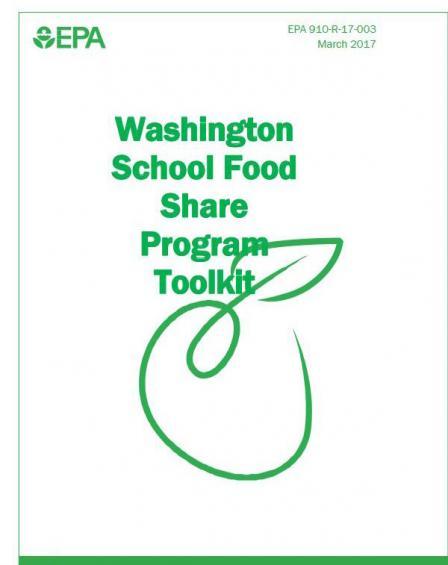Washington’s Innovative School Food Share Toolkit: Advancing Sustainability and Combating Food Waste
Transforming School Cafeterias into Hubs of Sustainability
The U.S. Environmental Protection Agency (EPA) has introduced the Washington School Food Share Program Toolkit, a pioneering resource designed to tackle food waste and enhance sustainability efforts in schools statewide. This toolkit equips educators and school administrators with actionable strategies to implement food sharing initiatives that redirect surplus meals to those in need instead of discarding them. Amid rising concerns about environmental degradation and food insecurity, this program exemplifies a proactive approach to conserving resources while supporting vulnerable communities.
Partnering closely with school cafeterias, the program facilitates the collection and redistribution of edible leftover food that would otherwise contribute to landfill waste. By adopting efficient food recovery protocols and involving cafeteria personnel, participating schools have collectively prevented thousands of pounds of food from being wasted annually. Beyond environmental benefits, the initiative nurtures a culture of generosity and sustainability within school communities.
Toolkit Features Empowering Schools
- Comprehensive procedural manuals outlining food safety and donation guidelines
- Provision of reusable containers and clear signage to streamline food collection and sharing
- Educational resources designed to engage students and staff in sustainability awareness
| Indicator | Pre-Implementation | Post-Implementation |
|---|---|---|
| Monthly Food Waste (lbs) | 1,200 | 450 |
| Number of Participating Schools | 5 | 25 |
| Meals Donated | 0 | 3,500 |
Implementing Robust Food Sharing Systems in Educational Settings
Establishing an effective food sharing program in schools demands a comprehensive strategy that balances operational logistics with health and nutrition standards. Schools should begin by crafting explicit policies that delineate food safety measures and specify which items qualify for redistribution. Collaboration among cafeteria managers, educators, and families is crucial to ensure surplus meals are shared responsibly without compromising hygiene or dietary requirements.
Incorporating technology, such as digital inventory management tools, can enhance the tracking of leftover food and facilitate timely redistribution to students facing food insecurity. This approach not only minimizes waste but also promotes fairness and accessibility within the school environment.
Essential Practices for Successful Food Sharing
- Comprehensive training for staff and volunteers on safe and ethical handling of surplus food
- Clear visual cues and communication campaigns to educate students about food sharing initiatives
- Designated sharing zones within cafeterias for easy access to leftover items
- Partnerships with community organizations to manage food that cannot be redistributed on-site
| Best Practice | Advantages |
|---|---|
| Daily Monitoring of Surplus Food | Significantly lowers food waste volume |
| Nutritional Assessment of Shareable Items | Guarantees healthy options for all students |
| Community Engagement Initiatives | Enhances local support and awareness |
Balancing Food Waste Reduction with Nutritional Excellence
Targeted interventions in school meal programs can dramatically decrease food waste while ensuring students receive wholesome, balanced nutrition. Introducing smaller portion sizes alongside dedicated share tables encourages students to take only what they can consume and share uneaten but safe food with peers. Nutrition education campaigns further empower students to understand the importance of food conservation and healthy eating habits, fostering a community-wide commitment to sustainability.
Utilizing data analytics to track student preferences allows food service teams to tailor menus that appeal to students’ tastes, reducing uneaten food. Collaborative menu planning between staff and students enhances meal satisfaction and nutritional intake.
| Strategy | Effect on Waste | Nutritional Advantage |
|---|---|---|
| Share Tables | Cuts down on discarded food | Expands access to nutritious meals |
| Portion Size Management | Reduces plate waste | Promotes balanced eating |
| Student Feedback on Menus | Aligns meals with preferences | Boosts meal satisfaction and consumption |
| Nutrition Awareness Programs | Encourages mindful eating | Cultivates lifelong healthy habits |
Maximizing Program Success: Recommendations for Schools
To fully leverage the benefits of the Washington School Food Share Program, schools should focus on building strong partnerships with local food vendors to secure a steady supply of fresh, nutritious ingredients. Maintaining open communication with program coordinators ensures schools stay informed about evolving regulations and best practices, facilitating ongoing compliance.
Engaging both students and staff through targeted educational initiatives fosters a shared commitment to reducing food waste. Operational efficiency is critical; schools are encouraged to adopt streamlined tracking systems that document surplus food collection and redistribution, supporting both internal evaluation and external reporting requirements.
- Establish a centralized calendar for food donation activities
- Conduct quarterly training sessions emphasizing safety and regulatory compliance
- Collaborate with local nonprofits to broaden food distribution networks
- Utilize digital tools for accurate and efficient data tracking
| Recommendation | Advantage | Implementation Tip |
|---|---|---|
| Regular Coordination with Suppliers | Ensures consistent food availability | Schedule monthly supplier meetings |
| Data-Driven Oversight | Enhances compliance and program effectiveness | Implement mobile tracking applications |
| Community Outreach | Boosts engagement and participation | Host awareness events and workshops |
Final Thoughts
The Washington School Food Share Program Toolkit marks a vital advancement in the fight against food waste and the promotion of sustainability within educational institutions. Backed by the EPA, this comprehensive guide empowers schools to efficiently redistribute surplus food, benefiting students and the wider community. As adoption expands across districts, this initiative serves as a leading example of how collaborative efforts can effectively address food insecurity and environmental responsibility on a broader scale.







